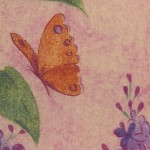 It’s February and once again many small miracles are happening just under the surface of the soil. Daffodils are already pushing through the dirt and beginning to show off their buds. Winter hardy succulents are emerging as tiny miniatures of their former selves, ready to spring forth with new growth. My birdbaths that I planted in the fall with succulents are emerging with the promise of a new year. My hellebores or Lenten Roses are right on schedule, plump buds seeking the sun with shinny green leaves along side.
It’s February and once again many small miracles are happening just under the surface of the soil. Daffodils are already pushing through the dirt and beginning to show off their buds. Winter hardy succulents are emerging as tiny miniatures of their former selves, ready to spring forth with new growth. My birdbaths that I planted in the fall with succulents are emerging with the promise of a new year. My hellebores or Lenten Roses are right on schedule, plump buds seeking the sun with shinny green leaves along side.
Every year I plan a new project for my little gardens and this year I hope to develop a better butterfly garden and decided that February would be a good time to remind all my fellow gardeners of the pleasure that butterflies give to a garden. Butterflies are like living ornaments or jewels that flutter down to sip nectar from the flowers.
First I’ve researched some fun butterflies facts. If you want to impress your friends, start referring to butterflies as “leps”, short for lepidoptera, the Greek word coined by Aristotle meaning scaled wings. Surprisingly, Alaska has 78 species of leps compared to 17 species living in Hawaii. Reason being is that leps follow their favorite plants along coastlines, mountain ranges and river valleys while leps have a “hit or miss” journey over the Pacific Ocean to Hawaii. A butterfly’s feet contain taste buds so when they touch nectar plants, the proboscis uncoils its two long tubes to sip nectar. The lep enthusiast handles a butterfly by grasping it by the wings just above the body and as close as possible to its shoulders. Make sure your hands are dry to avoid loss of scales. If the lep struggles too hard, turn it upside down to induce a calming effect. .
In my butterfly garden, I will have to choose both nectar plants for the mature flyers and host plants for egg laying and for feeding the caterpillars. In choosing flowers, colors matter. Yellow and purple are best, followed by white, then blue, then red. The following are some great plants for nectar feeders: Joe-Pye weed, butterfly bush, fire bush, heliotrope, lantana, pentas, asters, purple coneflowers, and cosmos. Host plants include the following: carrot, dill fennel, parsley, passionflowers, milkweed, and pipevine, I compared websites and several books to compile these lists as those deemed best for the southeast. Another bit of information all sources agreed was the need to have something blooming through out the year to keep your winged beauties in your garden space up until the time for laying of eggs.
I urge each interested gardener to plan his or her on graph paper to help allow for space for each of the plant selections. Buy seeds for annuals early and plant inside to get a jump start and buy perennial plants to have flowering plants the first year. To create a watering area, purchase a shallow saucer and fill it with stones or gravel—fill the dish with a small amount of water. The butterflies will rest on the stones and sip water from the spaces between.
I hope each of you enjoy planning your butterfly gardens as much as I have. The afternoons I drew out my garden was a pleasant way to divert my attention from the cold and bleak days of February.
